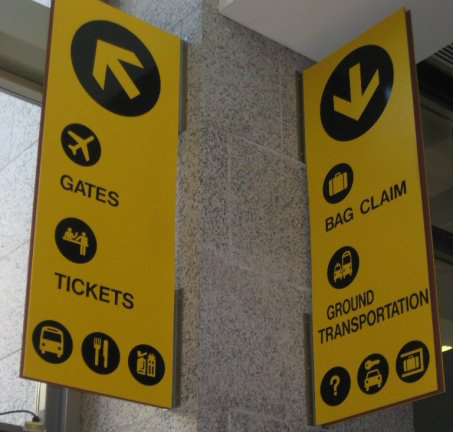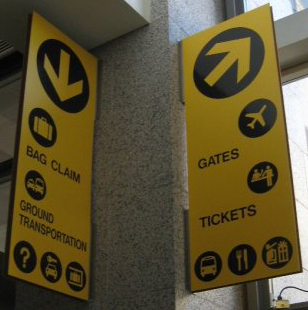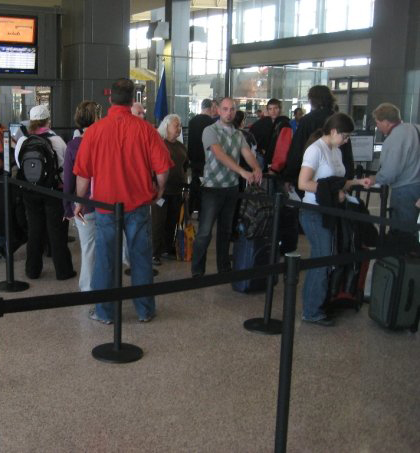


| 
| Rose states that "any object is always actualized in a specific moment of use, which produces both the object and the sort of person looking at it" (Rose 220). This is clearly seen through the assumptions made by the signs and by the people viewing them; in fact it establishes their relationship. The signs in the Austin-Bergstrom International Airport find their identity by what they can give and what the passengers they are speaking to need. The signs assume a number of things: that the viewers need at least one of the presented things, gates, tickets, around know what the symbols mean, even down to the simplicity of the questions mark, the fork and knife, and the airplane. At the same time, as people assume, they are actualizing the signs they see. Without the people, the signs are void of meaning. On a basic level, both the signs and the people give life to each other in the context of the airport. Outside of the airport, the signs do not make sense, nor would it help people should they be found outside of the context of where they can be used. |
| The ability for the signs throughout the airport to assign a name to the people walking through the space is an example of the power they are given as a traveling necessity that people require these days. The "power/knowledge that constitute the institutions: for example ... regulations,... laws, morals, and so on" comes from the authority that the people seem to have allowed throughout their lives (Rose 174). It is as though the power that people started with (assuming that people start with power) they have entrusted to the institution of airports in general. The Austin-Bergstrom International Airport is simply an example of this. The technologies that the institution uses are these signs and symbols. They are an "asserted...truth of their claims" that they received power to produce (Rose 174). The regulation and simplicity of the images helps to express the wide range of audiences (though they are all passengers, as this sign has defined) that airports support.The "co-construction of image and observer" that Rose states "relate[s] to each other in specific times and places" can be seen here (Rose 220). This sign suddenly requires that people who enter this new area of the airport must be passengers. This "passenger-ness" that people take on is a temporary and finite identity that the airport has temporary and finite power to use while the people walk through the airport. It is an identity that both the people and the airport must agree on for the process of movement to the airplanes to continue. As they enter this line, the sign constructs the people and gives this identity and the people give the construction of "this is an institution's line that has more power than I have." The importance of this co-construction is that it "does not pre-exist its social life" and therefore needs the people to give it the ability to form a line, both theoretically and in actuality (Rose 220). | 
|





